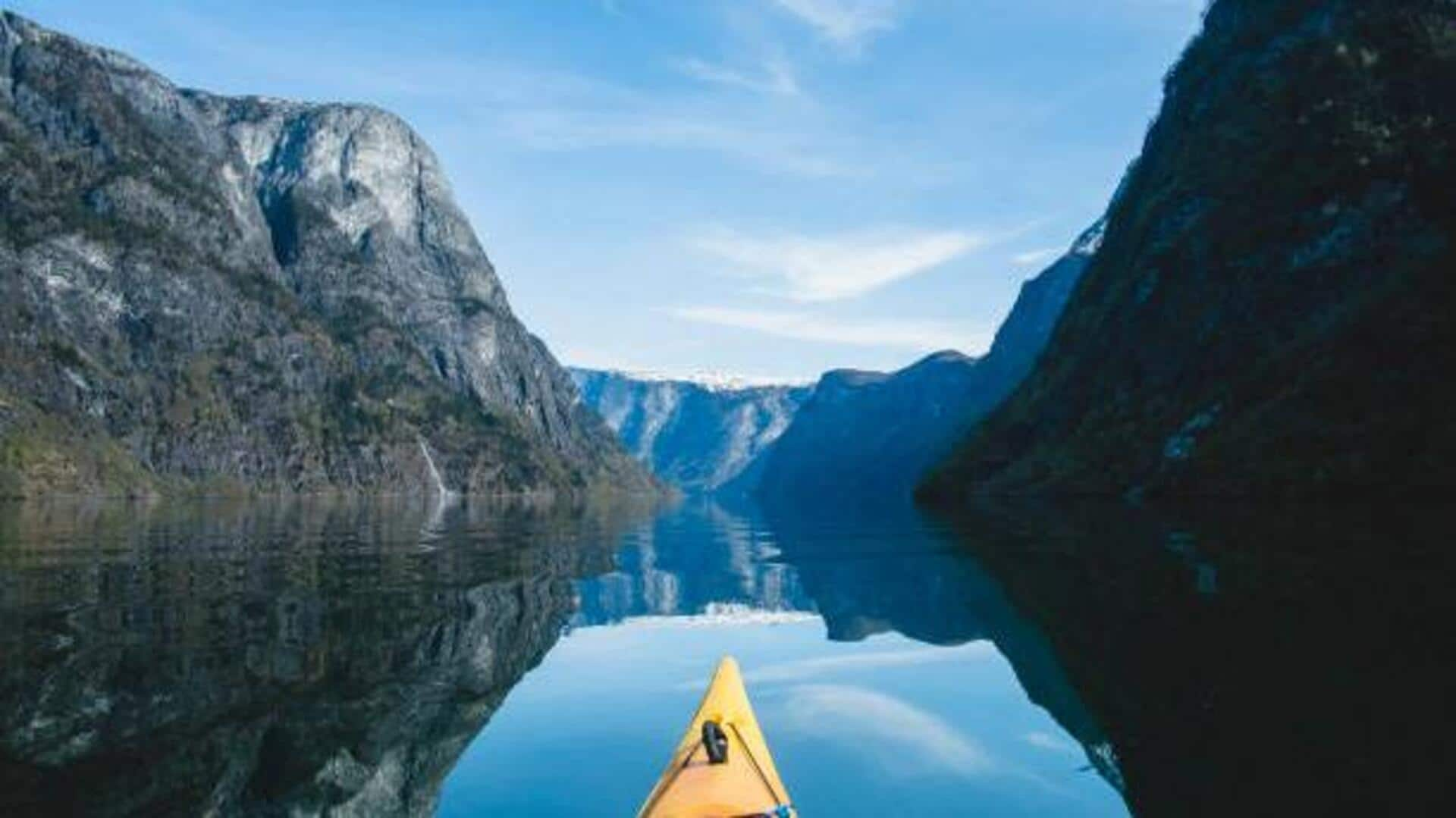
Canoeing through Norway's fjords: A guide
What's the story
Canoeing through the fjords of Norway is one of the best ways to experience the natural beauty of the country. These waterways, which are carved by glaciers, offer an unparalleled serene environment to explore. Surrounded by towering cliffs and lush greenery, the fjords are ideal for anyone looking for tranquility and adventure. Here are some tips to plan your canoe trip through these untouched landscapes.
Selection
Choosing the right fjord
Norway's fjords are a different experience altogether. The longest and deepest, Sognefjord, presents magnificent views and wildlife. The dramatic waterfalls and steep cliffs of the Geirangerfjord are awe-inspiring. For a quiet time away from the crowds, Naeroyfjord offers narrow passages and peaceful surroundings. The fjord you choose should depend on your preferences for scenery, wildlife, and privacy.
Timing
Best time to visit
The ideal time to canoe in Norway's fjords is late spring or early summer when temperatures are pleasant and days are long. From May-June, you can experience blooming flora along the fjord edges without the July-August peak tourist crowds. Autumn also makes for a stunning backdrop with colorful foliage but brings cooler temperatures that you might need extra gear for.
Equipment
Essential gear for canoeing
Proper equipment is a must for a safe and comfortable experience while exploring Norway's fjords by canoe. You will need a sturdy canoe that can withstand open water conditions, along with life jackets for all participants. Waterproof clothing protects you from sudden weather changes that can be typical in the region while dry bags keep your belongings safe from moisture exposure while paddling.
Safety tips
Navigating safely through fjords
Safety is the top priority when canoeing through Norwegian fjords as the weather can be unpredictable. Regularly checking forecasts and carrying navigation tools like maps or GPS devices are essential. These precautions ensure you don't get lost in vast expanses, especially when fog obscures visibility, making landmarks hard to identify until it clears.